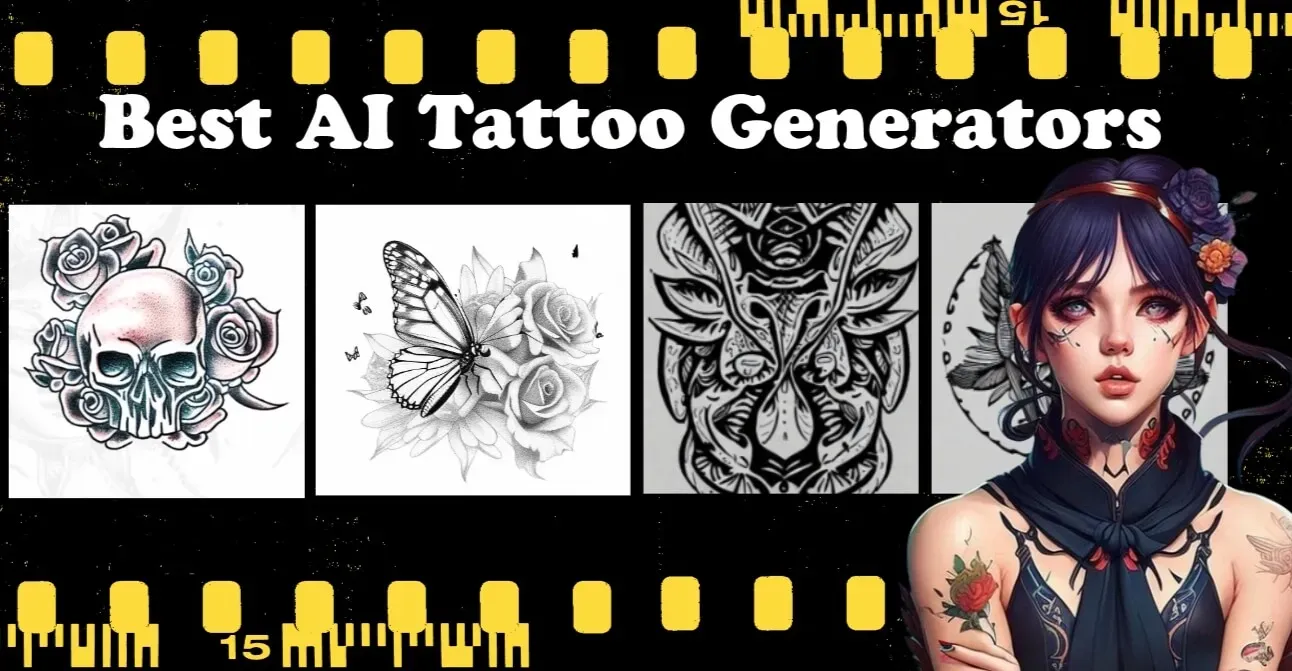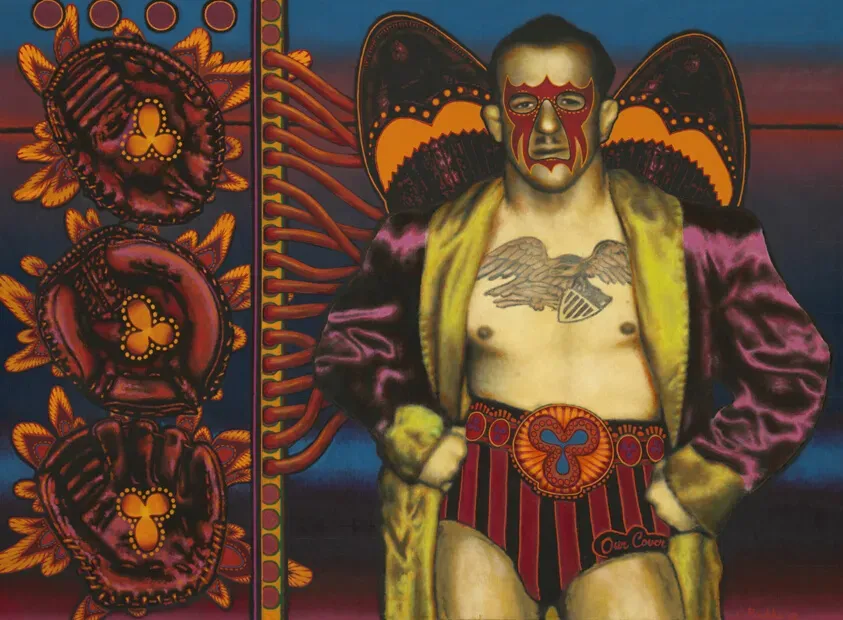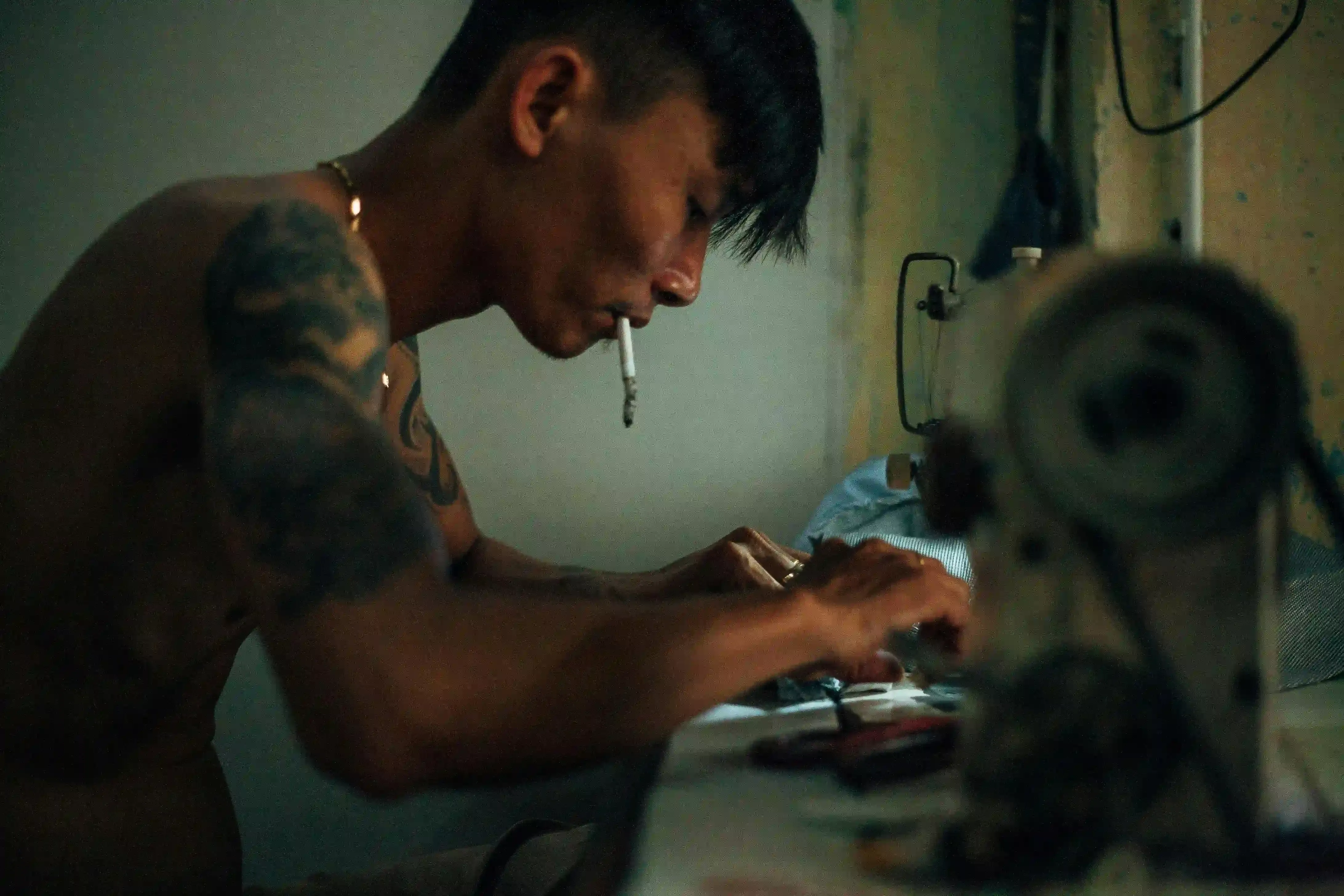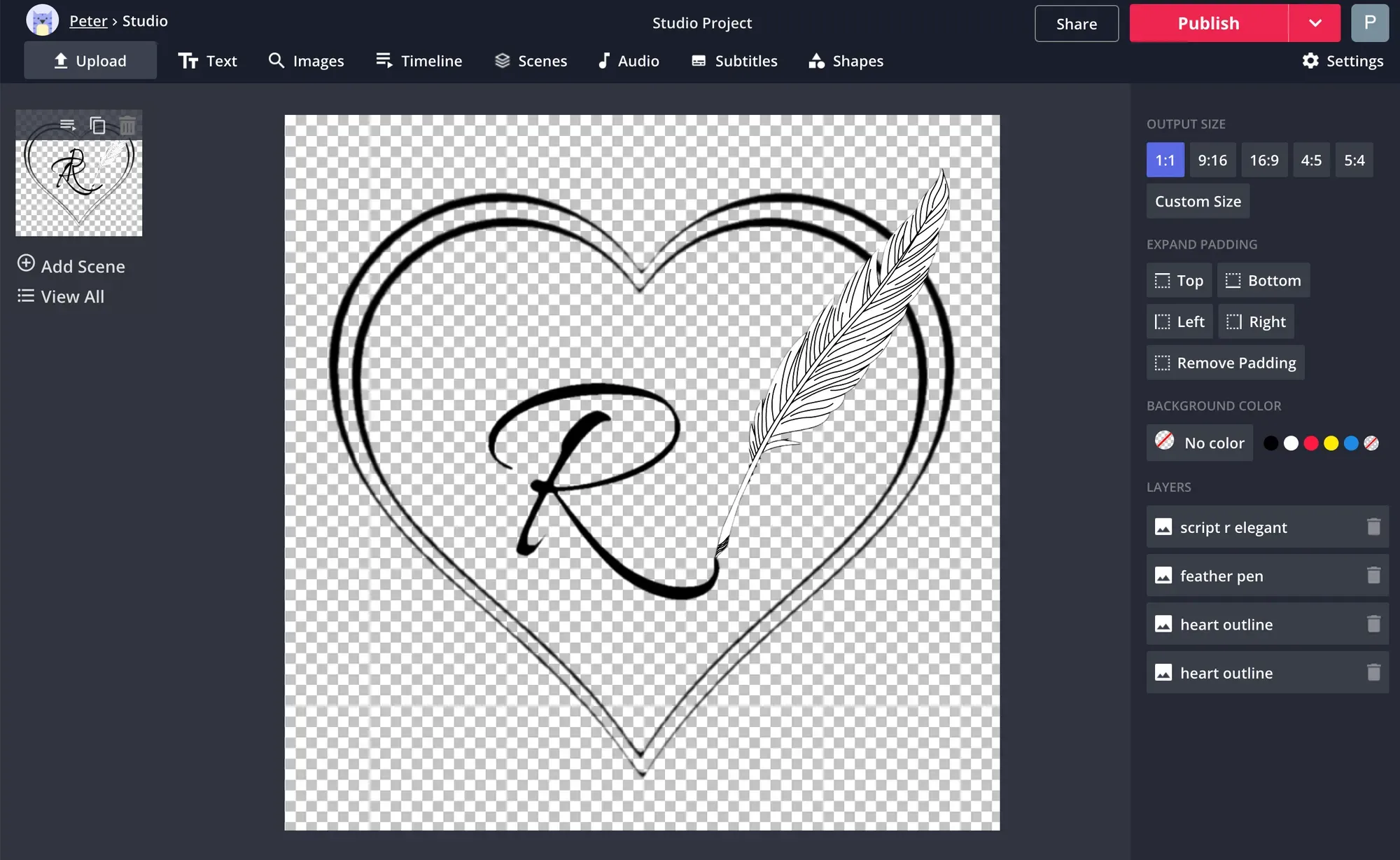Table of Contents
Staring at a blank page or scrolling endlessly through generic flash art can feel like trying to find a needle in a haystack when you're planning new ink. You know you want something unique, something that speaks to *you*, but translating that vague idea into a solid design? That's the hard part for many. This is where a tattoo designs maker steps in, promising to bridge the gap between concept and sketch.
Why Use a Tattoo Designs Maker?
Why Use a Tattoo Designs Maker?
So, you're thinking about getting some ink, but the idea of sketching something yourself feels like asking a cat to do your taxes? Or maybe you've scrolled through thousands of designs online and everything looks... well, like everything else. This is precisely Why Use a Tattoo Designs Maker? Because let's be honest, most of us aren't secret Da Vincis. These tools can take that fuzzy idea in your head – like "a grumpy badger riding a tiny bicycle" – and spit out something visual. It's like having a brainstorming buddy who never judges your weirdest concepts and works lightning fast, showing you possibilities you wouldn't have stumbled upon otherwise.
Comparing Different Tattoo Designs Maker Tools
Comparing Different Tattoo Designs Maker Tools
Not All Digital Canvases Are Created Equal
Alright, so you're sold on the idea of using a tattoo designs maker. Great. Now comes the fun part: figuring out which one won't leave you pulling your hair out. Think of it like picking a tattoo artist – they all use needles and ink, but the results can be wildly different. Some AI tattoo generators are fantastic at spitting out abstract concepts based on keywords, giving you a visual starting point. You type in "cyberpunk dragon with floral wings," and bam, you get something that *might* resemble that. Others are more like digital sketchpads, letting you layer images, text, and basic shapes, which is better if you have a clearer vision you just need help assembling.
Finding the Right Fit for Your Vision
The real difference often boils down to control versus creativity. Some tattoo designs maker tools offer tons of sliders and settings – line weight, color palettes, specific styles (like blackwork, traditional, watercolor) – giving you more granular control over the output. This is good if you're picky. Others are more "black box" AI, where you give it a prompt and hope for the best, which can sometimes yield surprising and cool results, but also a lot of bizarre, unusable ones. Free tools are a great way to dip your toe in, but often come with limitations on resolution, usage rights, or the sheer volume of designs you can generate. Paid versions usually unlock more features and higher-quality outputs, essential if you plan on actually using the design.
Tool Type | Best For | Pros | Cons |
|---|---|---|---|
AI Generator (Text-to-Image) | Brainstorming abstract or complex ideas | Fast ideation, unexpected results | Less control, can be inconsistent |
AI Assisted Editor | Assembling existing elements, refining ideas | Combines AI with manual control | Requires some design input |
Digital Sketchpad/Layering Tool | Users with a clear vision, combining images | High control over layout | Minimal AI creative input |
Tips for Getting the Best Results from Your Tattoo Designs Maker
Tips for Getting the Best Results from Your Tattoo Designs Maker
Feeding the Machine: Crafting the Perfect Prompt
Look, an AI tattoo designs maker isn't a mind reader. Telling it "make me a cool tattoo" is like asking a chef to "make me some food" – you'll get *something*, but probably not what you actually wanted. The key here is specificity, but also knowing how the tool interprets language. Instead of vague terms, use descriptive adjectives. Mention styles you like (traditional, geometric, blackwork, neo-traditional). Specify the subject matter clearly. If you want a wolf, is it howling? Running? Is it realistic or stylized? Adding details about mood or feeling can also help, though results vary wildly depending on the AI.
Think of it as writing a recipe, not a poem. The more precise your ingredients (keywords and descriptors), the better the chance the tattoo designs maker whips up something edible. Experiment with different wordings. Sometimes adding "as a tattoo design" helps the AI understand the context. Don't be afraid to throw in seemingly unrelated concepts; sometimes the weird mashups are where the magic happens, or at least, where you get a good laugh before trying again.
Refining and Iterating: It's Not a One-Shot Deal
Nobody gets the perfect design on the first try, and expecting a tattoo designs maker to nail it immediately is setting yourself up for disappointment. These tools are best used as iterative engines. Generate a batch of designs based on your initial prompt. See what works and what doesn't. Identify elements you like and refine your prompt for the next round. Maybe you love the line work on one, but the subject is wrong. Take that feedback and adjust.
Many tools allow you to use an generated image as a starting point for further variations. Leverage this feature. It's like sculpting – you start with a block of clay and chip away, adding detail and shaping it over time. A tattoo designs maker provides the initial clay block. Your job is to guide it towards the final form. Be prepared to spend time tweaking prompts and generating multiple options before you find something worth considering further.
- Be specific with keywords (style, subject, action, mood).
- Use negative prompts to exclude unwanted elements.
- Generate multiple variations from the same prompt.
- Use promising results as starting points for new generations.
- Don't be afraid to try unconventional combinations.
- Save designs you like, even if they aren't perfect yet.
Beyond the Screen: Taking Your Tattoo Designs Maker Idea to an Artist
Beyond the Screen: Taking Your Tattoo Designs Maker Idea to an Artist
so you've spent hours wrestling with the AI tattoo designs maker, feeding it prompts, refining outputs, and finally landed on a few images that feel like they're getting close to your vision. That's a solid first step, maybe even a giant leap from where you started with just a vague idea. But here's the critical next stage: taking that digital concept and putting it into the hands of a living, breathing human being who actually knows how to put ink into skin. An AI can generate a cool picture, but it doesn't understand how that design needs to flow with your body's anatomy, how colors will age, or the technical limitations of needles and skin. The AI is a tool for *ideation*, a high-tech sketchpad; the tattoo artist is the craftsperson who translates that idea into a permanent piece of art that works on *you*.
Is a Tattoo Designs Maker Right for You?
Is a Tattoo Designs Maker Right for You?
Are You Stuck in the Idea Phase?
Let's face it, some people can sketch out their tattoo idea on a napkin and it looks like it belongs in a gallery. For the rest of us, translating that cool image bouncing around your brain into something visual is a major hurdle. If you find yourself saying, "I know *what* I want, I just can't *draw* it," then a tattoo designs maker might be your new best friend. It's particularly useful if your concept is a mashup of disparate elements – trying to describe a traditional Japanese Oni mask mixed with sci-fi circuit board patterns to an artist before they even pick up a pencil can be tough. This tool gives you a way to show them a tangible starting point, a visual reference that says, " *this* vibe."
Think of it as overcoming creative paralysis. It's not about replacing the artist; it's about getting past that initial block. If you've got a clear subject but are open to different styles or compositions, feeding prompts into a tattoo designs maker can quickly show you variations you hadn't considered. It speeds up the brainstorming process considerably, letting you explore more avenues in less time than trying to sketch them yourself or waiting for artist consultations.
When It Might Not Be Your Best Bet
Now, if you've already got a detailed drawing, a very specific piece of existing art you want adapted, or a complex cover-up situation, a tattoo designs maker probably won't add much value. These tools work best when you're generating *new* ideas or exploring variations on a theme, not replicating something precise. They also struggle with nuances and the kind of subtle artistry that comes from a human hand. Asking an AI for a design that perfectly flows with the musculature of your arm or incorporates a scar seamlessly? Not going to happen. That requires an artist's eye and experience.
Also, if you have a specific artist in mind whose style you absolutely adore, it's often better to approach them with your general concept and trust their creative process. They've honed their skill over years, and trying to force their hand with a rigid AI-generated design might not yield the best results. A good artist wants to put their own touch on a piece, making it uniquely theirs and uniquely yours. Handing them a polished AI image can sometimes feel like you're skipping the collaborative part of the process.
Use Case | Tattoo Designs Maker Helpful? | Why or Why Not |
|---|---|---|
Exploring abstract concepts | Yes | Quickly visualizes complex ideas |
Combining disparate elements | Yes | Generates mashups you might not draw |
Getting a highly specific replication | No | AI lacks precision for exact copies |
Designing for complex body flow/cover-ups | No | Requires human artistic judgment and experience |
Brainstorming styles for a subject | Yes | Can show variations rapidly |
Collaborating closely with a specific artist | Maybe, as a starting point only | Artist's input is paramount; don't over-rely on AI image |
Making Your Decision
Ultimately, deciding if a tattoo designs maker is right for you depends on where you are in the design process and what kind of person you are. Are you an idea generator who needs a visual kickstart? Do you enjoy playing with technology and exploring possibilities? Do you understand that the AI output is a starting point, not the final product? If you answered yes to these, it's probably worth experimenting with one. It's a low-stakes way to see a lot of different looks quickly.
However, if you prefer a traditional design process, have a very clear and specific image in mind, or are already working closely with an artist you trust implicitly, you might find a tattoo designs maker an unnecessary detour. It's a tool, and like any tool, its usefulness depends on the job you need done. Don't expect it to replace the skill and artistry of a professional tattoo artist; see it instead as a potential aid in refining your initial vision before you walk into the studio.
Final Thoughts on Your Digital Sketchpad
So, you've played around with a tattoo designs maker, generated some wild concepts, and perhaps even found a few contenders. These tools aren't magic wands that instantly produce your finished tattoo, ready for the needle. Think of them as sophisticated brainstorming partners or sketch pads on steroids. They can bust through creative blocks and offer starting points you might not have considered. But the real work, the refinement, the conversation with a skilled artist who understands line weight, shading, and how ink lives on skin? That part is non-negotiable. Use the AI to spark ideas, explore variations, and get closer to visualizing your concept, but remember the final design, the one that will be with you for the long haul, still needs the human touch.